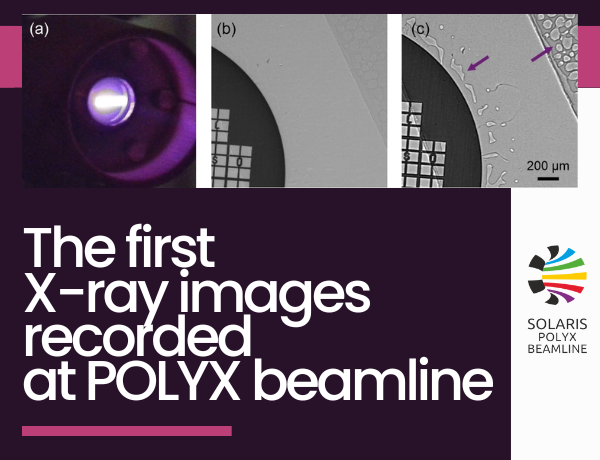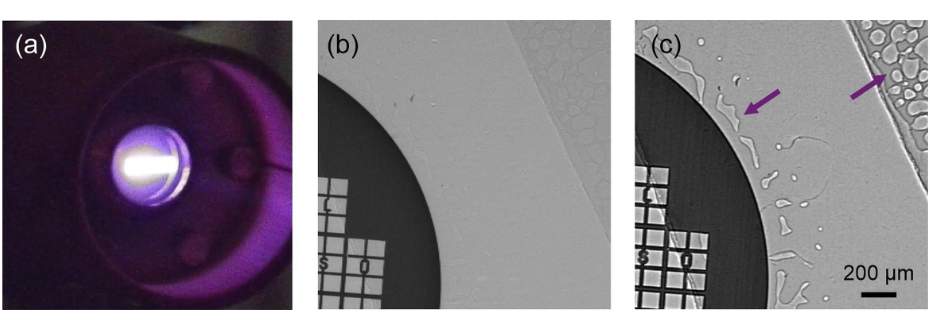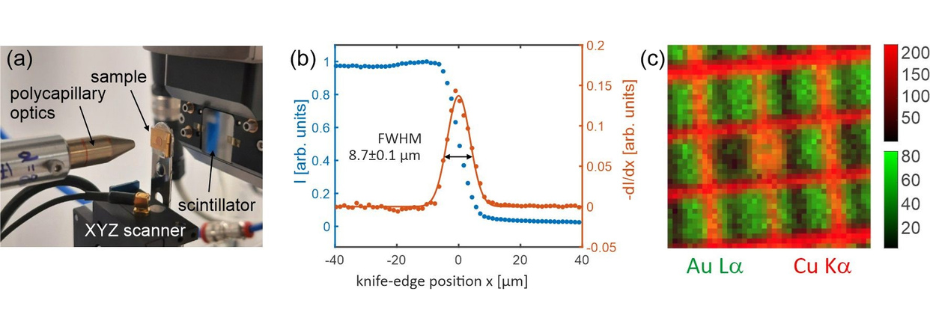
 Web Content Display
Web Content Display
SOLARIS centre
 Web Content Display
Web Content Display
 Web Content Display
Web Content Display
The first X-ray images recorded at POLYX beamline

POLYX is a beamline under construction at SOLARIS that is focused on X-ray microimaging and microspectroscopy in the tender/hard energy range of 4-15 keV. A recent publication described the general concept of the beamline and showed first X-ray images measured at POLYX with a white (polychromatic) X-ray beam. Performed experiments demonstrated the possibility of X-ray phase contrast imaging of weakly absorbing test samples and focusing of the X-ray beam with polycapilllary optics for X-ray fluorescence imaging of elemental distribution inside samples.
POLYX is a compact beamline that is being constructed at SOLARIS and is scheduled for user operation in 2023. The main idea behind POLYX is to provide SOLARIS users with access to X-ray microimaging and X-ray microspectroscopic methods at higher energies (4 keV–15 keV) without using insertion devices or sophisticated X-ray optics. The name POLYX originates from polycapillary optics that will be extensively used to concentrate not only monochromatic, but also polychromatic X-rays.
A recent paper presented the first experimental data collected for simple test samples during white beam commissioning of POLYX. The white beam commissioning was performed in September 2022, before a 5-months-long shutdown of the SOLARIS storage ring that is related to experimental hall extension.
White X-ray beam commissioning results, performed with a provisional experimental setup, demonstrated two important modalities of the POLYX beamline. First, X-ray propagation based phase contrast imaging was demonstrated using a direct white beam from the bending magnet (Fig. 1). Second, focusing of the polychromatic white X-ray beam with polycapillary optics to sub-10 µm spot was achieved and enabled to record a first X-ray fluorescence map (Fig. 2).
After the installation of the monochromator that is expected in spring 2023, X-ray imaging at POLYX will be augmented with further spectroscopic capabilities. Ultimately, the beamline may find broad applications in biomedical sciences, material science, physics and chemistry, earth science and environmental sciences or cultural heritage.

Figure 1. Demonstration of X-ray phase contrast imaging at POLYX. The object used for demonstration was a metal microgrid attached to a holder with a “sticky” tape. (a) Direct white X-ray beam from the bending magnet of POLYX visualized on a diamond vacuum window and propagating in air. (b) Conventional X-ray absorption image of the object. (c) Phase contrast X-ray image that enables to visualize weakly absorbing features (air bubbles in the glue).
Figure 2. Focusing of the X-ray beam at POLYX using polycapillary optics. (a) Photo of the setup. (b) Scan of the X-ray beam showing sub-10 µm focusing. (c) An X-ray fluorescence image of a test object: copper microgrid attached to a gold foil shown in a false color scale (red – copper, green – gold).
Link to the publication:
